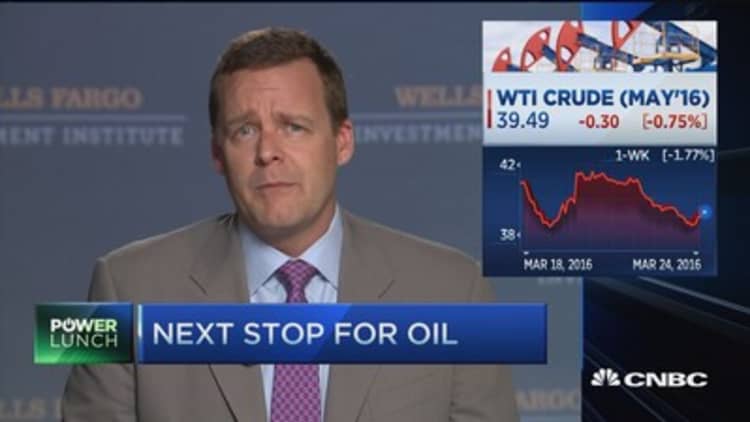Crude futures fell on Monday as European markets observed the Easter break while U.S. data showed hedge funds and other big speculators still slow to build long positions after the oil price rebound of the past two months.
U.S. crude's West Texas Intermediate (WTI) futures below $40 a barrel as investment banks such as Barclays and Macquarie warned that market fundamentals were weak enough that prices could possibly return to mid-, or even lower, $30 levels.
"There's just been too much U.S. crude builds lately for the market to ignore," said Tariq Zahir, who's betting WTI for delivery in the near-term will weaken further versus long-term contracts, expanding the market's so-called contango structure.
's front-month fell 18 cents to $40.26 a barrel. Reuters data showed trading in the U.K.-based benchmark amounted to less than 55,000 lots, about a sixth of regular volume, due to the Easter break.
U.S. crude's front-month contract settled down 0.2 percent, or 7 cents, at $39.39 a barrel.

Both benchmarks were still up about 50 percent from 12-year price lows seen in mid-February.
Despite the advance, weekly data from the U.S. Commodity Futures Trading Commission suggested that money managers, including hedge funds, hesitant to wager all the way on a WTI rally despite a continuous drop in short positions held by the group.
Managed money's gross long positions in WTI have barely risen since January and inched up by just 6,000 lots to around 300,000 lots in the week to March 22, the CFTC data showed. The number of short positions slipped to nearly 64,000 lots, or around 64 million barrels of oil.
Most banks expect little upside to oil prices in the near future.
""The market likely remains oversupplied by around 0.6 million bpd (barrels per day) through 1H16 and inventories will continue to build from already high levels," analysts at Jefferies International forecast for the first half of the year.
Barclays said net flows into commodities totaled more than $20 billion in January-February, the strongest start to a year since 2011, and prices could fall 20 to 25 percent if that were reversed.
"Were such a scenario to unfold, the price of oil could fall back to the low $30s," it said.
Members and non-members from the Organization of the Petroleum Exporting Countries (OPEC) are due to meet in the Qatari capital Doha on April 17 to discuss a plan to freeze oil production at January levels.
So far, 10 countries have confirmed their attendance at the meeting, with only OPEC-member Libya saying it will not attend.
"There is going to be pressure on the participants in the meeting to ensure they achieve something. Otherwise they risk the support-market sentiment that we are seeing now dissipate rapidly," said Victor Shum, senior oil and gas analyst at IHS in Singapore.
U.S. crude oil production fell for a third month in December to 9.26 million barrels per day due to declines in the biggest shale-producing states, although the fall was offset by a rise offshore, according to the U.S. Energy Information Administration (EIA).
The EIA said this month that U.S. shale oil production in April is expected to record its second-largest monthly decline on record at around 106,000 barrels per day (bpd).


